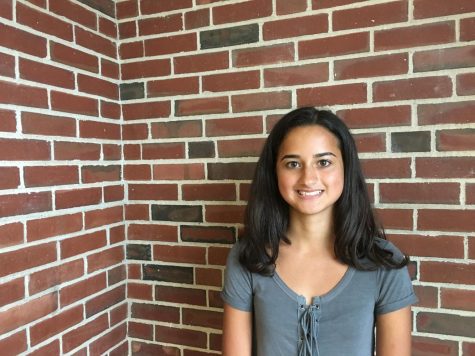Garden gives opportunity to grow
The garden provides a variety of benefits to the student body, among them a better understanding of nutrition. “When [students] actually work in the garden, they come back and they have more appreciation for their food,” applied arts and technology teacher Zbigniewa Giegucz said.
September 29, 2018
The school garden, with its entrance tucked away in the D100 hallway, has much to offer students and faculty, including a unique, versatile learning environment and hands-on nutritional education, but only a few students and teachers are taking advantage of it.
With fifteen vegetable beds, perennial flowers, benches, and a gazebo, this often overlooked area of the building is a refreshing outdoor space, primarily utilized by Nutrition and Culinary Arts classes.
Applied arts and technology teacher Zbigniewa Giegucz, who oversees the garden’s upkeep, believes students do not have enough exposure to the resource.
“[The garden] is a great outdoor classroom,” Giegucz said. “It’s underutilized. I would love to see more teachers out there.”
Giegucz’s Nutrition and Culinary Arts students cook with food grown in the garden, such as kale, zucchini, herbs, pumpkins, and carrots, making it an integral component of the course.
“It’s important for kids to be able to go out there and see how things are planted and where the food comes from and when they see that…they are apt to eat healthier,” Giegucz said.
Beyond the school, the garden has developed a strong relationship with the community. It has received grants from Lowe’s Garden Center, the Northboro Junior Woman’s Club, Marlborough Garden Club, Southborough Woman’s Garden Club and the Murphy Sisters Foundation, which has established a memorial to the sisters in the garden.
“We’re lucky to have community support,” Giegucz said. “We also give back to the community. We brought food over to the Southborough Senior Center and flowers to the Northborough Senior Center.”
During the summer months, the garden continues to be an asset. Giegucz runs a program where special needs students learn about horticulture and nutrition.
“[The students] gain a better understanding of what they’re eating and why they’re eating,” Giegucz said.
In past summers, students have also volunteered in the garden, but this has been discontinued because there was not enough funds to pay a supervisor. As a result, the garden has become overgrown.
Giegucz is not alone among the faculty in recognizing the value of the garden. Fine and performing arts teacher Michelle Sheppard has incorporated it into the curricula of her Photography I, Art I and Digital Art classes.
“[The garden] helps our students feel good about our school when they see a beautiful space,” Sheppard said. “I think that puts people in a good mindset for learning. It being beautiful and scenic makes [students] pay attention to things in a different way.”
The garden is also utilized by applied arts and technology teacher George Clarke’s Video Production students, who use the environment to practice taking good quality camera shots and audio. Clarke is also appreciative of the space and believes its curricular benefits are endless.
“Just about any subject that you can think of can look at a garden,” Clarke said.
Giegucz agrees and hopes the garden will be accessed by more classes in the future. She believes part of the problem lies in that the school is unaware of all that it offers.
“There’s has got to be some way that [teachers] can use it, and I’d love to see this space used a lot more,” Giegucz said. “It’s a great space.”



![The garden provides a variety of benefits to the student body, among them a better understanding of nutrition. "When [students] actually work in the garden, they come back and they have more appreciation for their food," applied arts and technology teacher Zbigniewa Giegucz said.](https://arhsharbinger.com/wp-content/uploads/2018/09/GardenForOnline-900x600.jpg)







